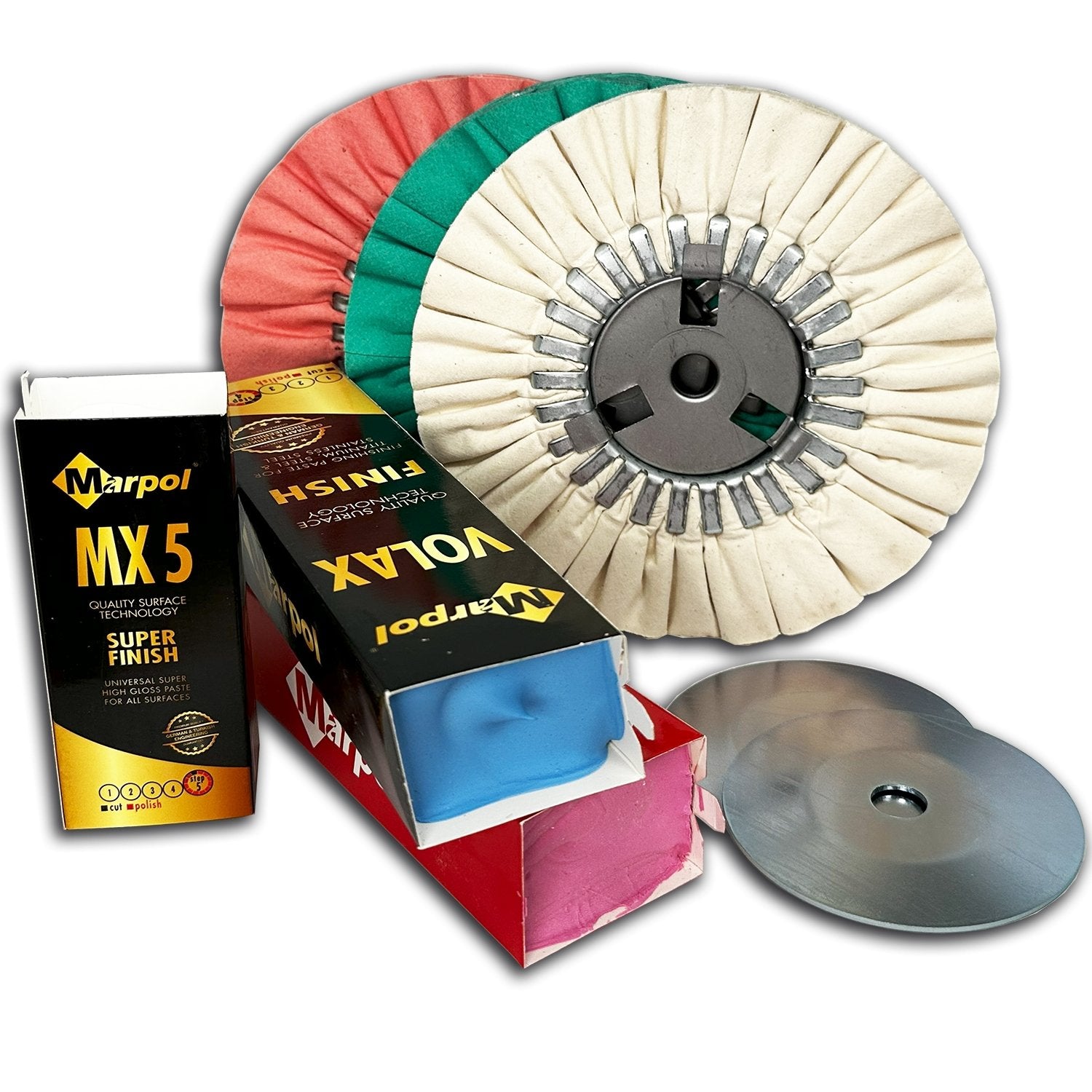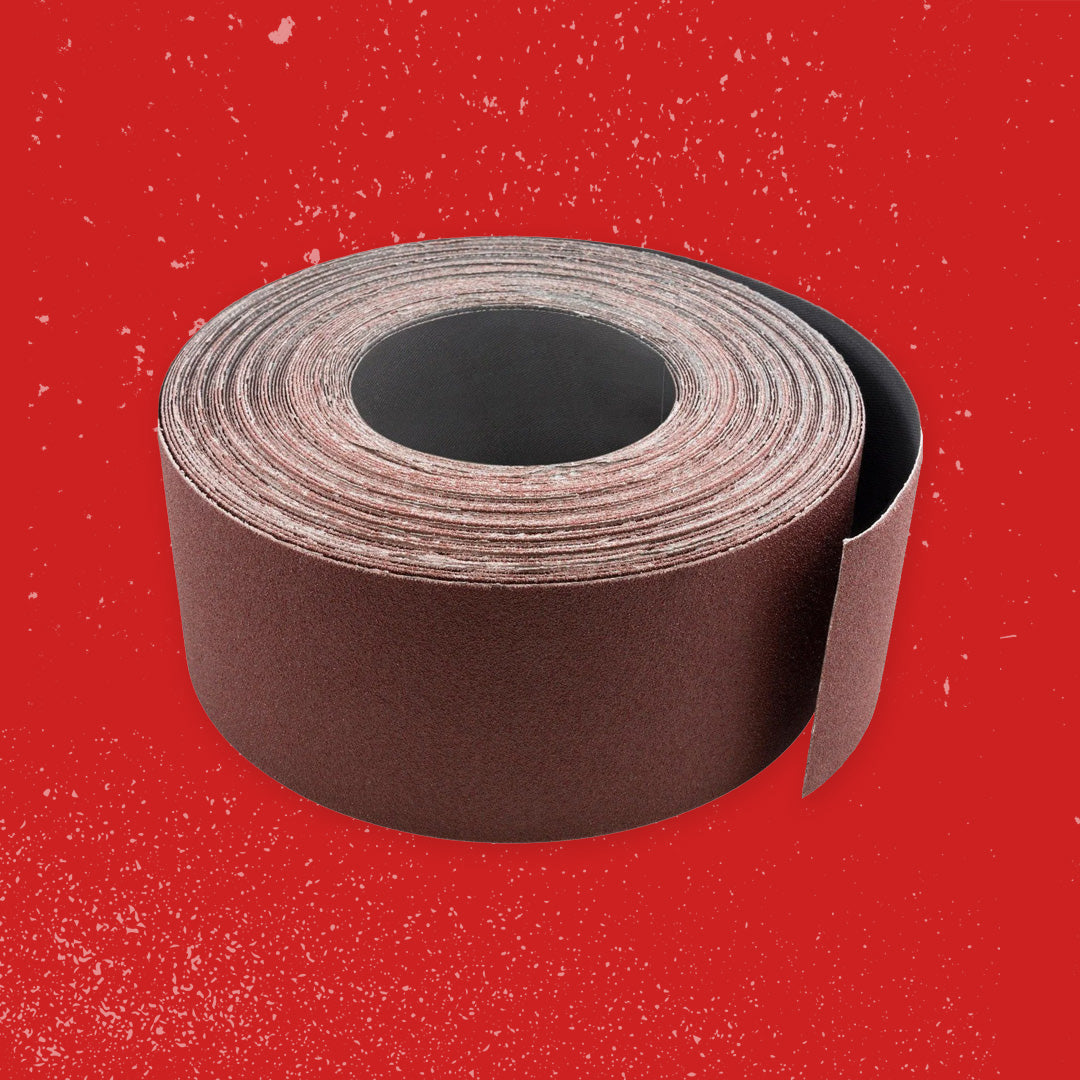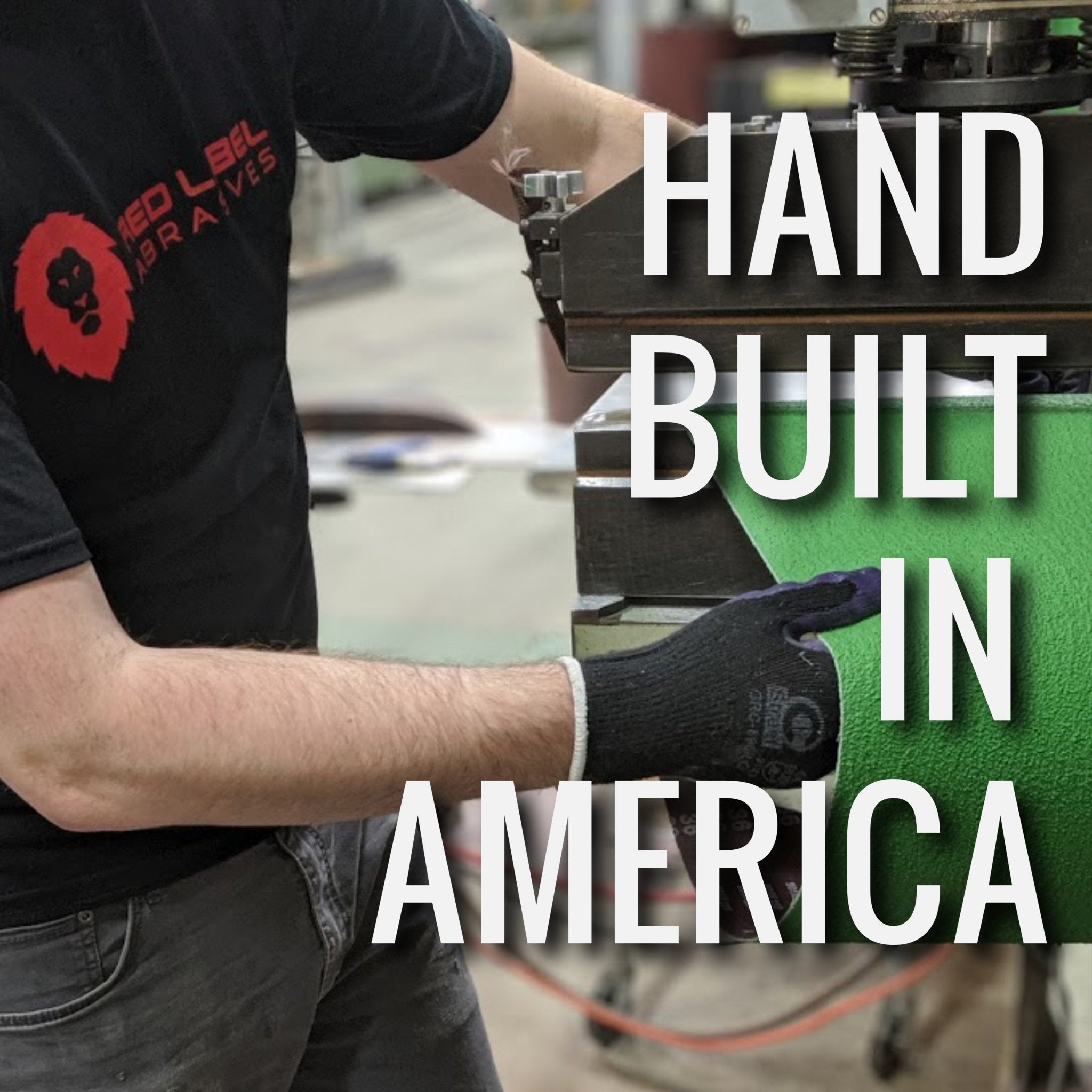Your Cart is Empty
Free Shipping over $150 (Excludes Oversized Products)
Free Shipping over $150 (Excludes Oversized Products)
Sanding Belts
Sanding Discs

How to Store Abrasives for the Best Performance
by David Kranker 6 min read

Quick Summary
To give your abrasives a longer life with better performance you need to store them away from the ground in an area with moderate temperatures (60°F-80°F) and low humidity. Low humidity is crucial. High humidity can ruin the joint adhesive on sanding belts. Sanding belts should be stored on a rack and sanding discs and wheels should be stored on/in racks, bins, drawers, or boxes. Improper storage can impact the safety of the abrasive, especially for sanding belts.
Topics Covered:
- Appropriate Temperature and Humidity For Abrasives
- How to Store Sanding Belts
- How to Store Sanding Discs and Grinding Wheels
- How to Store Stropping Belts
- Do Abrasives Have a Shelf Life?
- Contact an Abrasive Specialist
When your goal is optimal performance, how you store abrasives like sanding belts, cutting discs, and grinding wheels is just as important as how you use them. Done correctly, the abrasives work harder for longer. If good storage practices are ignored, the performance and lifespan of your abrasives can take a hit.
In an ideal world, you’d have a dedicated storage area for abrasives. This room would have partition walls instead of walls that are part of the larger building, so that the abrasives don’t have contact with direct sunlight or any heat sources like radiators and ducts. It would also be air-conditioned, so that temperature and humidity problems don’t damage the products. Of course, not everyone has the ability to create a designated abrasive storage area and you can still protect your abrasives without one. The key is storing your abrasives up off of the ground and in a place where temperatures are consistently moderate.
If you’re going to be storing a large number of coated abrasives, you may want to consider investing in a humidity-controlled storage environment. It will pay for itself over time by maintaining the product quality, so you can use the abrasives for longer.
Appropriate Temperature and Humidity For Abrasives
The recommended temperature range for storage is 60°F-80°F while ideal relative humidity is 45%. Relative humidity is a critical factor in abrasive storage, as issues usually occur when it changes. For example, the humidity in heated rooms drops by up to 15% at the beginning of the heating season while it goes up to 80% or more after long periods of rain or foggy weather.
Stored abrasives don’t always have enough time to adjust to these changed conditions. When relative humidity increases, moisture can build up on the backing and bonding of your abrasives. These changes can result in:
- Shape distortion due to the backing, which is usually paper, cloth, or fiber, changing its form more quickly than the glue or resin bonding material. High relative humidity causes a concave curl, with the grit side up, while low relative humidity results in a convex curling.
- High humidity can cause the backing to soften, leading to loading, creasing, and early grit loss, especially if glue was used for bonding. When frictional heat builds up during use, it will further soften the bond.
- Low humidity can cause the product to lose its flexibility and become brittle, especially if it is coated on ‘A’ weight paper. Waterproof paper is affected in a similar manner. Narrow belts in particular will curl up and cup as the backing dries out and shrinks.
- Productivity and output rate can diminish up to 25% with resin-bonded abrasives and between 50% and 100% for glue-bonded abrasives.
While curling can be a sign of damage, it's important to note that some belts curl naturally due to the nature of the material. Belts that are thin and high grit tend to curl without any damage. Therefore, a belt can still be safe for use even it has curled.
If ideal temperature and humidity conditions are difficult to maintain, at the very least make sure that all coated abrasives are stored off of concrete floors and away from heaters, hot air ducts, or sources of dampness.
The durability of abrasives is mainly determined by their moisture content. Abrasives that have been exposed to high levels of moisture after use will not last as long as intended and may even become a safety risk if they break. If stored properly, their service life can last for years.
How to Store Sanding Belts
Remove abrasive belts, especially wide ones, from their original packaging at least 24 hours before scheduled use and hang them on a rack near the machine you will use them on. This will give the belts a chance to adjust to the temperature and humidity of the workspace.
Ideally, racks should have non-metallic hangers that are level with the ground at least 4” in diameter and 4” from the wall. Racks should also be structured so that the belts are at least one foot off the floor and don’t touch each other. Do not store your belts on concrete floors or near any other area that could become damp.
Improper storage of sanding belts can impact the safety of the belt. Humidity can weaken the belt joint and cause it to snap on use. When a belt snaps it can end up smacking your face or arms in its rotation.
How to Store Sanding Discs and Grinding Wheels
According to ANSI B7.1-2000, Section 2.3, abrasives like grinding wheels must be stored in appropriate racks, bins, drawers or boxes, away from environmental risks like dampness, freezing temperatures, and conditions that can cause condensation to form on the wheels.
Smaller wheels (up to 3 inches in diameter) can be stored in boxes or drawers, along with components like plugs, cones, and mounted points. Larger wheels should be placed in racks with padded two-point cradle support to prevent them from rolling.
In addition:
- Grinding wheels should be arranged to ensure that they are used on a rotational basis, to prevent the possibility of damage due to prolonged storage. If you use vitrified grinding wheels, store them flat.
- Placeabrasive discs on a firm, flat surface.
- Avoid storing coated abrasives on damp areas such as concrete floors. Instead, keep them in their original packaging until they are needed.
- Store hard grade cylinder, thick rim, and straight cup wheels on their edges. Soft grade and type 11 taper cup wheels are best stored rim-to-rim and base-to-base to prevent edges from chipping and walls from cracking.
Extra care should be taken with wheels and discs kept in mobile storage areas, such as barges and boats, field contractors, and rescue squad trucks, to ensure that they are not affected by environmental conditions.
How to Store Stropping Belts
Unlike the the abrasives above, stropping belts do not contain abrasive grains and are either made with leather or synthetic fibers. Humidity isn't as much of a concern with stropping belts, but particle contamination is. Reside from grinding or abrasive chunks can stick to the belts. A contaminated belt could scratch the surface you're trying to polish, which is undesirable.
To avoid contamination, stropping belts should be stored in plastic bags away from your grinding area or high grit belts. Leather stropping belts also naturally stretch. When not in use, leather stropping belts should be taken off of your machine and stored to help the belt retain its shape and durability.
Do Abrasives Have a Shelf Life?
It depends on the abrasive. Vitrified bonded grinding wheels have an almost infinite shelf life, but the possibility of accidentally damaging a wheel in storage increases over time. Organic bonded grinding wheels and coated abrasive discs and belts do have a shelf life.
Coated abrasive products will retain their efficiency and usefulness for some time, but fresh abrasives are always the best abrasives. That is precisely why Red Label abrasives are always produced to order. Coated abrasive products may contain organic material that breaks down over time. For this reason, it’s recommended that coated abrasive products be used within 2-3 years from the date of production. Of course, coated abrasive products could survive over 3 years in the right conditions, but you should exercise caution in using older abrasives. Older coated abrasives may be unsafe. This is especially the case with sanding belts.
The joint on a sanding belt is more likely to give out as the belt gets older. The last thing you want is to be using a sanding belt and have the joint snap only to send the belt smacking you in the face or on the arms. This is precisely why we recommend using protective equipment for your face and eyes when using a sanding belt. Face shields are the best form of protection while grinding or sharpening with a belt.
Contact an Abrasive Specialist
Proper storage is essential for keeping your abrasives strong and effective. At Red Label Abrasives, we produce high-quality abrasives designed to deliver professional results at an affordable price. We’re a family-owned company that has been serving manufacturers, small businesses, and hobbyists for more than 35 years. We take great pride in being able to offer exceptional customer service and technical support. For more information about the purchase, use, and storage of our sanding belts, rolls, and discs, please call 844-824-1956 or fill out a contact form. ABOUT THE AUTHOR
David Kranker is a writer and creative maker who has been covering the abrasive industry on the Red Label Abrasives Blog since 2020. David spends his time continually researching sanding techniques to provide readers with the latest and greatest information. In his free time, David utilizes abrasives for many different home and auto projects at his home in Delton, MI.
Our Most Popular Abrasives

EdgeCore Ceramic Sanding Belts

EdgeCore Ceramic Flap Discs

Buffing Kit
Shop By Product Category





Why Choose Red Label?







